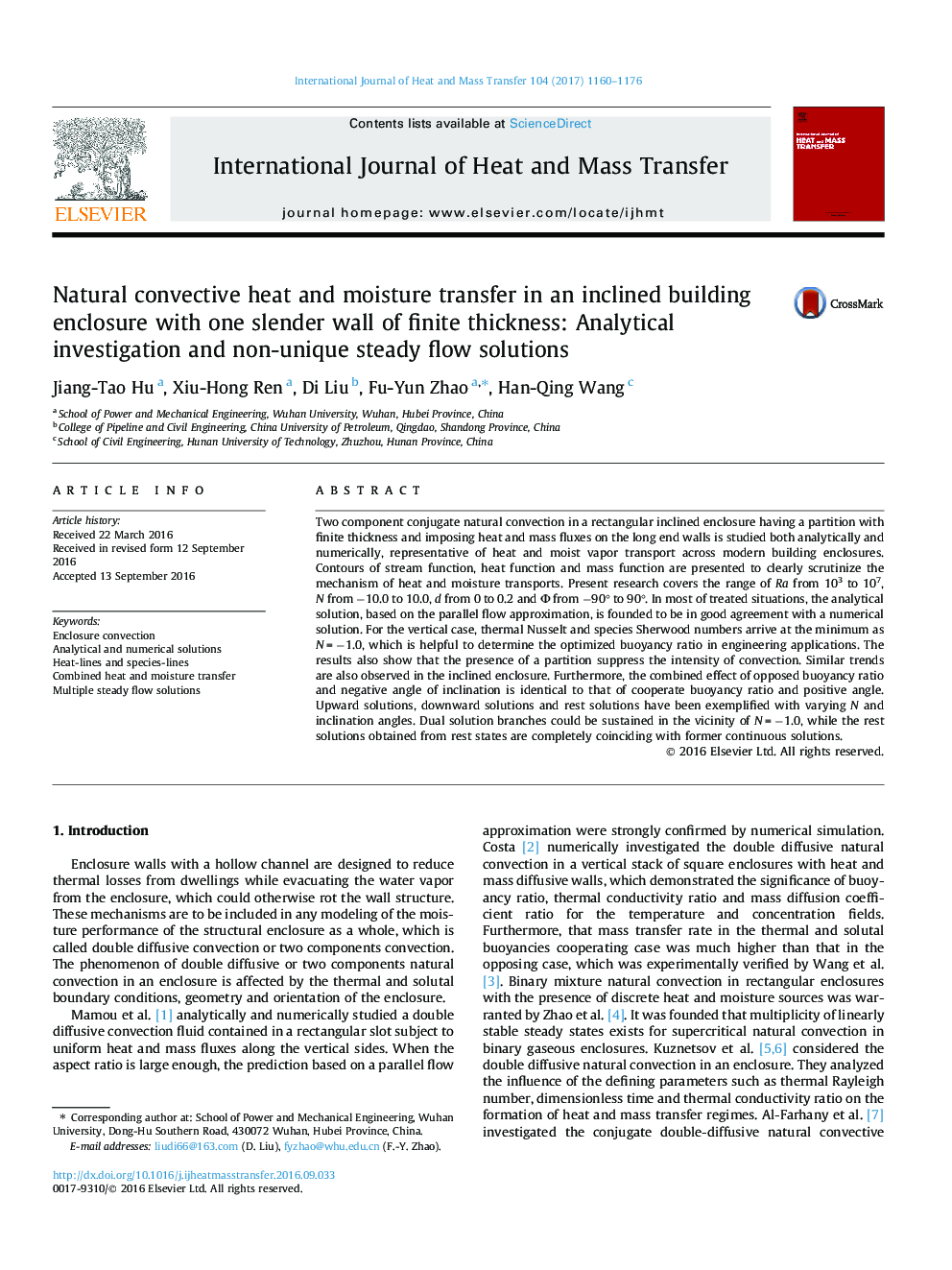| Article ID | Journal | Published Year | Pages | File Type |
|---|---|---|---|---|
| 7055094 | International Journal of Heat and Mass Transfer | 2017 | 17 Pages |
Abstract
Two component conjugate natural convection in a rectangular inclined enclosure having a partition with finite thickness and imposing heat and mass fluxes on the long end walls is studied both analytically and numerically, representative of heat and moist vapor transport across modern building enclosures. Contours of stream function, heat function and mass function are presented to clearly scrutinize the mechanism of heat and moisture transports. Present research covers the range of Ra from 103 to 107, N from â10.0 to 10.0, d from 0 to 0.2 and Φ from â90° to 90°. In most of treated situations, the analytical solution, based on the parallel flow approximation, is founded to be in good agreement with a numerical solution. For the vertical case, thermal Nusselt and species Sherwood numbers arrive at the minimum as N = â1.0, which is helpful to determine the optimized buoyancy ratio in engineering applications. The results also show that the presence of a partition suppress the intensity of convection. Similar trends are also observed in the inclined enclosure. Furthermore, the combined effect of opposed buoyancy ratio and negative angle of inclination is identical to that of cooperate buoyancy ratio and positive angle. Upward solutions, downward solutions and rest solutions have been exemplified with varying N and inclination angles. Dual solution branches could be sustained in the vicinity of N = â1.0, while the rest solutions obtained from rest states are completely coinciding with former continuous solutions.
Keywords
Related Topics
Physical Sciences and Engineering
Chemical Engineering
Fluid Flow and Transfer Processes
Authors
Jiang-Tao Hu, Xiu-Hong Ren, Di Liu, Fu-Yun Zhao, Han-Qing Wang,
